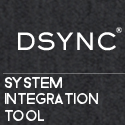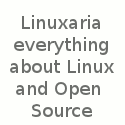What is A Content Management System?
“A content management system (CMS) is a computer program that allows publishing, editing and modifying content on a web site as well as maintenance from a central page. It provides procedures to manage workflow in a collaborative environment. These procedures can be manual steps or automated cascade. The core function of Content Management Systems is to present information on web sites. CMS features vary widely from system to system. Simple systems showcase a handful of features, while other releases, notably enterprise systems, offer more complex and powerful functions.”
OK, that’s Wikipedia’s version of content management system and yes, I have to agree that it’s a pretty good definition. There are a lot of CMSs available both commercial and non commercial. And really you can do a whole lot of things by using a free or non commercial content management system. Take a look at the list below and some of these might be familiar to you (Joomla, WordPress) and some might not. I’ll try give a comprehensive analysis of each and every CMS and It’s up to you to decide which is best. Please don’t forget to give us your opinion about the article and let us know if there are any more free content management systems that you think should be in this list and why?
WordPress
This was introduced as a PHP-based blogging platform but now it has evolved in to a state-of-the-art publishing platform. WordPress is easily the most accessible and probably the most commonly used content management system out there. It is free and userfriendly and easily understandable at the same time. The best thing about WordPress is that it takes simply seconds to get it installed and up and running. And with the huge user community itay of plugins, widgets and themes for free.
Joomla
Joomla is an open source solution that is freely available to everyone. Most probably the best overall content management system out there.It is simple – it is extremely customizable, suitable for pretty much anything. Millions of websites are running on this simply because of its ease-of-use and extensibility. Joomla is often used by small and medium businesses, large organizations, non-profits and individuals. Joomla has an admin section which is highly user friendly and this too has a huge community so that this too has a large set of options from templates and styles to adding feeds, content blocks, menu management tools and more, Just take a quick trip to Joomla site and you’ll see why this is a popular choice.
Drupal
Another popular free and open source CMS, And like many of the other content management systems listed here, Drupal can be scaled for personal blogs or enterprise mega-sites, and like WordPress or Joomla this also has thousands of modules that can be added to increase functionality. And this too has a huge and active community.
Drupal is probably the most technicaly advanced pure content management system since both worpress and Joomla are blog centic.. But that doesn’t mean Drupal doesn’t have those cool blog functions such as profiles, user blogs, forums and comments.
The best thing about Drupal is that it’s ACL capability, stability, scalability, and reliability. And it can be installed remotely on any server.
The drawback of this is that it has relatively low number of plugins, including templates, so that it restricts both appearance and functionality for a certain level. And again the admin section is not that userfreindly if you doesn’t have some IT background. So if you are an IT professional and if you still like to add some codings to your website, this is the best solution for you.
SilverStripe
SilverStripe is again a well modularised PHP5 flexible open source Content Management System. This is quit new but it’s getting a lot of attention lately. SilverStripe has a simple and rich feature set for content editing. Silverstripe has a framework called Sapphirewhich is a Model View Controller (MVC) framework. With that the developers can extend the functionality and to customize the base in a straight forward manner. The content editing is so user friendly that even a novice can easily understand how to use it.
The problem with this is the lack of available learning materials. But I believe that it will resolve with the time.But for the time being, I will not recommend SilverStripe for a large web site with a huge amount of content.
CMS Made Simple
This is another Simple and free content management system which has a recursive acronym, and it’s extremely easy to use and learn. Featurwise this is not that comprehensive and I can’t compare this with some popoular CMS such as as WordPress, Joomla or Drupal, but it’s a very good alternative for small scale business. You can install this CMS Made Simple, and have your website up and running in a matter of minutes.
dotCMS
dotCMS is a java based content management system.Originaly this was developed to compete with the popular PHP based content management systems the market, as well as to provide a counterpoint to high cost, enterprise applications. In October, 2007 dotCMS 1.5 was the runner up for Packt Publishing’s “Best New Open Source CMS” award, followed in 2008 by a second place finish for Packt’s “Best Other Open Source CMS (best non PHP CMS)”.dotCMS was runner-up in the 2009 Packt Publishing category, “Best Other Open Source CMS.”
In May of 2012 they released version 2.0 which is a The fully functional GPL version of dotCMS, and it provides one the most scalable, powerful and easy-to-use web content management platforms in the marketplace today.
Expression Engine
Radiant CMS
Radiant is a no-fluff, open source content management system designed for small teams that was built on Ruby on Rails. It gives an endless list of awesome features and is definitely worth checking out.
This is a Ruby on Rails based content management system which is more suitable for smaller organizations to manage their content. And unlike most other content management systems out there, this requires the designer to have programming knowledge there for normally this is used by professional Ruby teams. So if you are a web developer and if you are managing the website for your client, then this is a great tool. But if you are letting your client to manage the content, I suggest you to check for another CMS.
concrete5
This is an open source content management system that focuses on ease of use. It has a file manager which supports bulk upload, an good market place for resources and a really good user friendly layout editor.
The best thing about concrete5 is that inline editing. That is every piece of content and every UI element on a concrete5 website is editable in place. There for you can view your site as the visitors see it in the same time you can edit it. (How cool is that!!). But I have to warn you, this is not as advanced as WordPress, Joomla and Drupal, but that lack of complexity makes it the best solution in some cases.
Dot net nuke community edition
Actually this is the first CMS I ever used and it is an open source web content management system based on Microsoft.NET. Original it was written in VB.NET, but it has shifted to C# since version 6.0.[4]. While the more comprehensive and functionality wise rich CMS is the commercial Professional and Enterprise Edition, it has a free community edition which provides almost all the frequently used functions for free.
Conclusion
The main intention of this article was to introduce you some free content management systems other that Joomla or WordPress. Now, I know that most of you are using Joomla or WordPress (as I do) for your blogs or web sites. But didn’t it crossed your mind that there might be some less popular but functionality wise excellent content management systems out there. Don’t you like to have a go and try out some of those? So if you are thinking about that, then I might, just might have achieved my goal. So let me know what is (are) your favorite? Why are you using it? Is there any other CMS that I should include? Don’t hesitate to leave a comment.
Article Source: http://EzineArticles.com/?expert=Thilina_Halloluwa


You definitively forgot Typo3, which has excellent features and extensions. It is even suitable for large websites. http://typo3.org/
Plone CMS plone.org is a must mention for me. I did extensive search about six years ago and settled with this one. It keeps getting better.
Keep an eye on my website 😉 http://www.prxa.info developing a CMS 😀
Good luck with it Liam.
Let me know when you have a testable beta.
drupal
Thilina, have a look at ProcessWire, I bet it will impress you 🙂